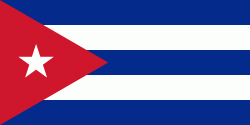Centro Habana (Centro Habana)
Centro Habana is one of the 15 municipalities or boroughs (municipios in Spanish) in the city of Havana, Cuba. There are many retail spaces (such as Plaza de Carlos III commercial center, office buildings, hotels, bars and clubs (such as the Casa de la Musica on Galliano). A chinatown - Barrio Chino - is also located in this district. It is a smaller municipality of Havana, and it has the highest population density.
Centro Habana is divided into five consejos populares (wards): Cayo Hueso, Colón, Dragones, Los Sitios and Pueblo Nuevo.
The infrastructure of the city, built 450 years ago, heavily deteriorated during the 1990s after the collapse of the Cuban-Soviet trade partnership. In 1996, restoration projects were started to improve housing and infrastructure in the Cayo Hueso community.
Centro Habana was established as an administrative division in 1963 and later formally made its own municipio in 1976.
Centro Habana is divided into five consejos populares (wards): Cayo Hueso, Colón, Dragones, Los Sitios and Pueblo Nuevo.
The infrastructure of the city, built 450 years ago, heavily deteriorated during the 1990s after the collapse of the Cuban-Soviet trade partnership. In 1996, restoration projects were started to improve housing and infrastructure in the Cayo Hueso community.
Centro Habana was established as an administrative division in 1963 and later formally made its own municipio in 1976.
Map - Centro Habana (Centro Habana)
Map
Country - Cuba
 |
 |
| Flag of Cuba | |
The territory that is now Cuba was inhabited by the Ciboney people from the 4th millennium BC with the Guanahatabey and Taíno peoples until Spanish colonization in the 15th century. From the 15th century, it was a colony of Spain, and slavery was abolished in 1886, remaining a Spanish colony until the Spanish–American War of 1898, when Cuba was occupied by the United States and gained independence in 1902. In 1940, Cuba implemented a new constitution, but mounting political unrest culminated in a coup in 1952 and the subsequent dictatorship of Fulgencio Batista, which was later overthrown in January 1959 by the 26th of July Movement during the Cuban Revolution, which afterwards established communist rule under the leadership of Fidel Castro. The country was a point of contention during the Cold War between the Soviet Union and the United States, and a nuclear war nearly broke out during the Cuban Missile Crisis of 1962. Following the collapse of the Soviet Union, Cuba faced a severe economic downturn in the 1990s, known as the Special Period. In 2008, Fidel Castro resigned after 49 years of leadership of Cuba and was replaced by his brother Raúl Castro.
Currency / Language
| ISO | Currency | Symbol | Significant figures |
|---|---|---|---|
| CUC | Cuban convertible peso | $ | 2 |
| CUP | Cuban peso | $ | 2 |
| ISO | Language |
|---|---|
| ES | Spanish language |















